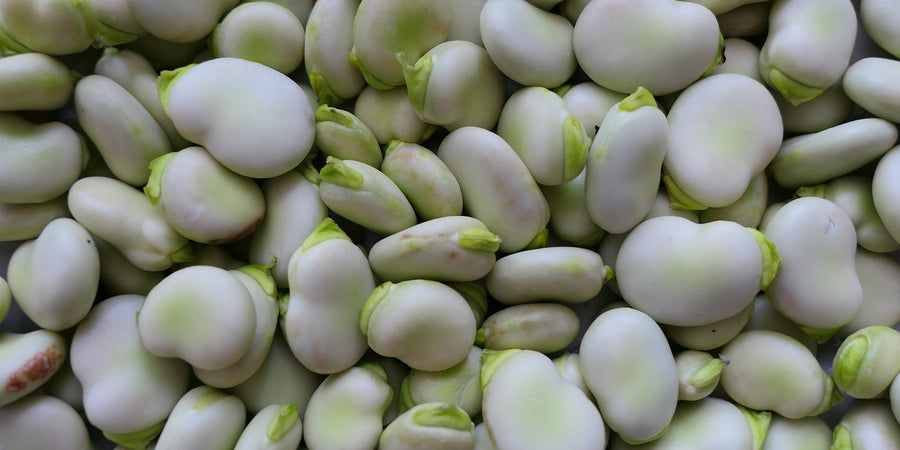How To Grow Broad Beans

The Broad beans originate from the Far East. Both have either a dwarf or short growing habit. Broad Bean are the hardier vegetable and prefer cool growing conditions to thrive in;.
Here's our guide to growing Broad Beans:
How, Where & When to Grow Broad Beans
Autumn varieties are sown in October/November, Spring varieties are sown in February/March or even as late as early May. Start seeds under protection in 9cm pots or sow direct outdoors after all signs of frost have past. Germination takes about 21 days. They prefer a well-drained soil with organic matter dug in the autumn as well as a sunny sheltered position.
In February, sow broad beans in the rows where your potatoes will be planted in March or April spaced to allow for the potatoes to go in. The beans will grow ahead and outpace the later-planted potatoes and gain you an extra crop from the same space The beans will not be harmed by earthing up the potatoes later - in fact this may benefit them. They don't particularly compete for the same nutrients, either. This means you should get as good a yield as you would have got from cropping separately.
An alternative way to grow beans is as part of what's known as the '3 sisters'. An introduction to the 3 sisters, these are climbing beans, pumpkins/squash and corn which when grown together form an interconnected plant guild. The beans add nitrogen to the soil for the pumpkins/ squash and anchor the corn, protecting it from winds. The corn acts as a living trellis for the beans to climb, the pumpkins or squash keep the other plants roots cool and moist acting as a living mulch. A very space efficient approach!
Distance
Support climbing variety and space them 15–20cm apart with dwarf varieties supported with twigs with spacing to 15cm apart.
Regular Care
Water regularly during dry spells and on the onset of flowers, start a weekly high potash feed. Black bean fly can form large colonies sucking sap and weakening the plants. Pinch out soft tips and spray heavy infestation with suitable pesticide. Rust can be a problem on Broad Beans later in the growing season. It is a fungal disease spread by the rain and makes the plants look as if they are going rusty. It grows rapidly in warm wet conditions causing leaf drop and possibly reduce the size of the pods.

Harvesting Broad Beans
French beans should be harvested whilst they are big enough to use and tender to use whilst Runner beans should be harvested when pods are about 10-15cm; variety dependent. After harvesting put the stalks on the compost heap and leave the roots in the ground to decompose. They are legumes, and capture their own nitrogen in their root nodules, thereby providing a free and natural boost to your soil!
Nutrition
Beans are an excellent vegetable source of protein and fibre. This may be a winning combination for weight loss. Broad beans are also rich in both folate and B vitamins, which we need for nerve and blood cell development, cognitive function and energy.
Cooking
Beans offer so much more to a dish than just boiling or steaming them. You could try following how the Italians use beans in a low calorie Risotto Verde, try a more unusual way to have beans on toast and try smashed beans on toast for a healthy alternative, or for a light summer meal try a bean and fennel salad…sow many choices!
Growing Guides
If you're thinking of sowing other vegetable and herb seeds, discover more of our growing guides.




